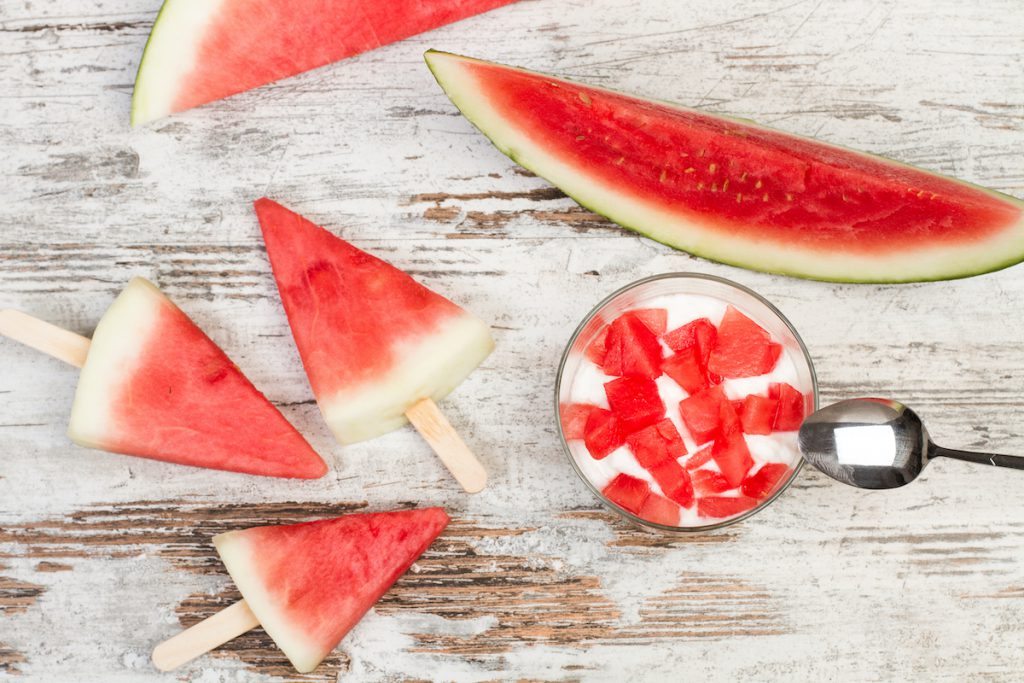Eat This After Every Workout to Improve Results
How you refuel after exercise can help or hinder your progress. Here’s how to give your body the nutrients it needs.

You warmed up, did cardio or strength training, and then cooled down and stretched a bit. Perfect. Now what?
If you really want to maximize the benefits of your exercise session, you’ll have a snack or meal that will give your body the nutrients it needs to refuel. That’s because when you work out, your body uses glycogen—or carbohydrates stored in the liver and muscles—for energy, especially during aerobic exercise. Your body may also need protein, which helps repair muscles.
But your perfect post-exercise snack or meal depends on the type and length of your workout. Here’s what you should reach for, according to nutritionists.
You Did Cardio Exercise for Less Than an Hour
If you’re doing endurance-based cardio for less than an hour, such as walking, swimming, or cycling, you’ll want to replenish your lost glycogen stores within 30 minutes of your cooldown period, says Armen Ghazarians, C.P.T., founder of Finish Fit in Glendale, California.
He suggests aiming for a four-to-one ratio of carbohydrates to protein. For example. If you eat a banana with 30 grams of carbohydrates, you want to add seven to 10 grams of protein along with it.
Fuel up with one of these ideas:
- 1 cup watermelon + ½ cup Greek yogurt
- 1 banana + 2 tablespoons almond butter
- ¾ cup low-sugar cereal + almond milk
Get and stay fit with SilverSneakers! Choose from dozens of different Community classes, visit a participating fitness location, or view the current schedule of SilverSneakers LIVE online classes.
You Did Cardio Exercise for More Than an Hour
“After a long, strenuous workout like a long hike or race, eat a meal within 30 minutes,” says Gabrielle Fundaro, Ph.D., a nutrition coach at Renaissance Periodization. She suggests aiming for at least 300 to 400 calories and 20 to 25 grams of protein. And don’t forget to pair that plate with plenty of water.
Just go easy on the fat. “Fat should be kept fairly low immediately following longer cardio, as it can slow gastric emptying and delay nutrient delivery to muscles,” Fundaro says. When picking a dish, no more than 30 percent of its calories should come from fat, or no more than 10 to 15 grams.
You also want to choose heart-healthy omega-3 fatty acids, such as nuts, seeds, and salmon. “Research shows omega-3 fatty acids in salmon can help stimulate muscle protein synthesis, which can help build stronger muscles,” Ghazarians says.
Fuel up with one of these ideas:
- Salmon + quinoa + spinach
- Turkey + tomato + lettuce + whole grain bread + optional light cheese
- Fresh fruit + nuts
You Did Strength Training
Within minutes of finishing strength training, reach for a snack with 200 to 300 calories and 20 to 25 grams of protein to stimulate muscle repair, Fundaro says.
Your entire body uses protein, but the majority of it goes to your muscles—and maintaining or building muscle is essential for older adults.
“You lose muscle mass with age, and that’s associated with a higher risk of falls and fractures,” says Mike Roussell, Ph.D., author of The Six Pillars of Nutrition. Even if you don’t get hurt, muscle weakness can limit your ability to move around or do things on your own.
What that means: Getting enough protein throughout the day, and especially after strength training, is a priority. If you’re a smoothie fan, opt for plant- or whey-based protein, Fundaro says.
Subscribe to our newsletter
It's quick and easy. You could be one of the 13 million people who are eligible.
Already a member? Click to discover our 15,000+ participating locations.
Follow Us
Hard-boiled eggs also make a great protein snack, says Marie Spano, R.D., a sports dietitian in Atlanta. Boil and peel them in batches so you have them ready in advance.
Fuel up with one of these ideas:
- Tuna + whole grain crackers
- 2 to 3 hard-boiled eggs seasoned to taste
- Any of these high-protein smoothies that don’t taste like chalk
You Have a Chronic Condition or Take Medication
These general guidelines can help, but if you have a chronic condition or take medication, you’ll want to ask your doctor or dietitian for any personalized nutrition and exercise recommendations.
If you have diabetes, for example, your doctor may want you to check your blood sugar before, during, and after exercise. If your blood sugar is low before exercise, your doctor may recommend a pre-workout snack like a slice of bread, a piece of fresh fruit, or six to 12 saltine crackers.
Rest assured, exercise is safe—and beneficial—for almost everyone, including people with arthritis or who have had a heart attack. The key is working with your doctor to figure out the best plan for you.
Take Your Favorite SilverSneakers Classes Online!
SilverSneakers members can access live fitness classes and wellness workshops through SilverSneakers LIVE. See the latest schedule and RSVP for classes here.
Not a member? If you have a Medicare Plan, it may include SilverSneakers—at no additional cost. Check your eligibility instantly here.
Not eligible for SilverSneakers? You can still get 200+ free SilverSneakers On-Demand videos and stay in touch with us by creating your online account.





